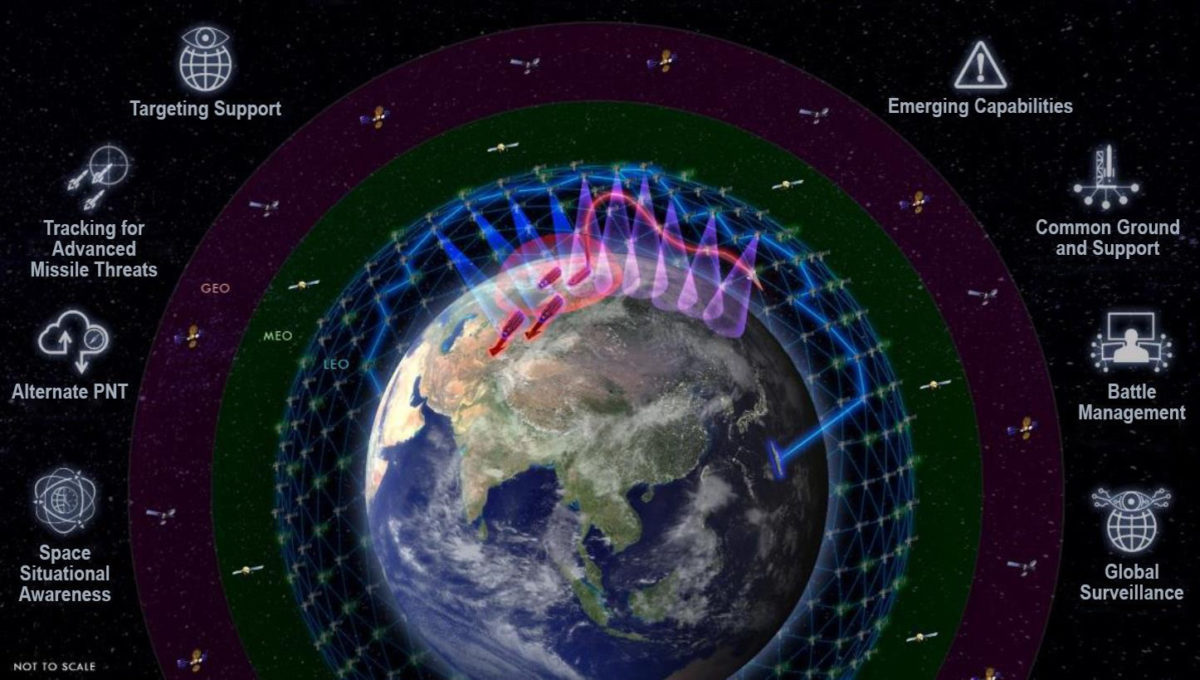The Pentagon’s Space Development Agency (SDA) awards two contracts totaling more than $342 million to deploy satellites for detecting and tracking hypersonic and ballistic missiles from space.

Derek Tournear
“The satellites will be able to provide missile tracking data for hypersonic glide vehicles and the next generation of advanced missile threats” — Derek Tournear, Space Development Agency Director
SpaceX and L3Harris Technologies will provide four tracking layer satellites each that will monitor ballistic and hypersonic missile threats as part of a much broader plan to add 28 transport layer satellites that will link up to form the “Tranche 0 Tracking Layer” in space.
“The satellites will be able to provide missile tracking data for hypersonic glide vehicles and the next generation of advanced missile threats,” said SDA Director Derek Tournear, in a public statement.
By the end of the 2022 fiscal year, both SpaceX and L3Harris Technologies will be expected to have provided four Overhead Persistent Infrared (OPIR) imaging satellites for the tracking layer of the National Defense Space Architecture (NDSA).
“We call it ‘tracking’ because it’s missile tracking — so it provides detection, tracking, and fire control formation for hypersonic glide vehicles, ballistic missiles […] any of those kinds of threats,” Tournear added.
The contracts were awarded just three weeks after US Secretary of Defense Mark Esper announced that China and Russia had weaponized space with killer satellites and directed energy weapons.
While L3Harris and SpaceX begin their contractual work on the eight-satellite tracking layer, contracts have already been awarded for the 28-satellites making-up the transport layer, and those were awarded to Lockheed Martin and York Space Systems.
The satellites will detect the missiles and relay the data via laser communications link.
“The transport satellites are the backbone of the National Defense Space Architecture,” said the SDA director.
“They take data from multiple tracking systems, fuse those, and are able to calculate a fire control solution, and then the transport satellites will be able to send those data down directly to a weapons platform via a tactical data link, or some other means,” he added.
Space has become a contested area for the military, and as thousands of satellites continue to be launched, a massive apparatus for global surveillance is being created with the most advanced technologies ever developed.

Image Source: Space Development Agency
On September 16, Secretary of Defense Esper announced that China and Russia had weaponized space through “killer satellites” and directed energy weapons designed to exploit and weaken the US military.
“In space, Moscow and Beijing have turned a once peaceful arena into a war fighting domain. They have weaponized space through killer satellites, directed energy weapons, and more in an effort to exploit our systems and chip away at our military advantage,” declared the Secretary of Defense and member of the Council on Foreign Relations.
The Pentagon is perceiving that its adversaries are advancing their military technologies in space, and so it is doubling-down on its own.

US Defense Secretary Mark Esper
“Moscow and Beijing […] have weaponized space through killer satellites, directed energy weapons” — Mark Esper, Secretary of Defense
Esper gave a nod to the progress three weeks ago when he said, “Thanks to our largest research and development budget in the department’s history, we are advancing critical technologies to maintain our military edge in areas such as hypersonic weapons, directed energy, and autonomous systems.”
Earlier this year, the Defense Innovation Unit (DIU) opened a solicitation to evaluate commercial solutions to deploy quantum sensors in space.
These sensors will utilize “demonstrable quantum technology to achieve significant performance improvements for aerospace and other novel applications to include, but not limited to, inertial sensing, timing and gravimetry.”
With the same timeline for completion as Tranche 0, the DIU wants a prototype that consists of a “compact, high-performance quantum sensor for precision inertial measurement in deep space and other GPS-denied environments.”
According to a joint presentation from the US Naval Research Laboratory and the University of Missouri, detecting missiles from space is a cakewalk compared to detecting other threats such as asteroids or space debris.
“The challenges of space-based threats dwarf anything considered in the context of missile defense,” the authors say.
“Unlike ICBMs, at any time an asteroid may emerge from any direction in space aiming at any point on Earth.”
According to the presentation, space-borne quantum sensors could help detect, prevent, or respond to missile attacks, asteroids, and comets, as well as keeping track of satellites and space debris that whiz around Earth’s orbit.
Pentagon wants commercial, space-based quantum sensors within 2 years












